What's made at a wild rice house in northern Minnesota? Food, community, and more
Driving home, I realize the Finland Wild Rice House experience has worked: I have a new relationship with this native grain.
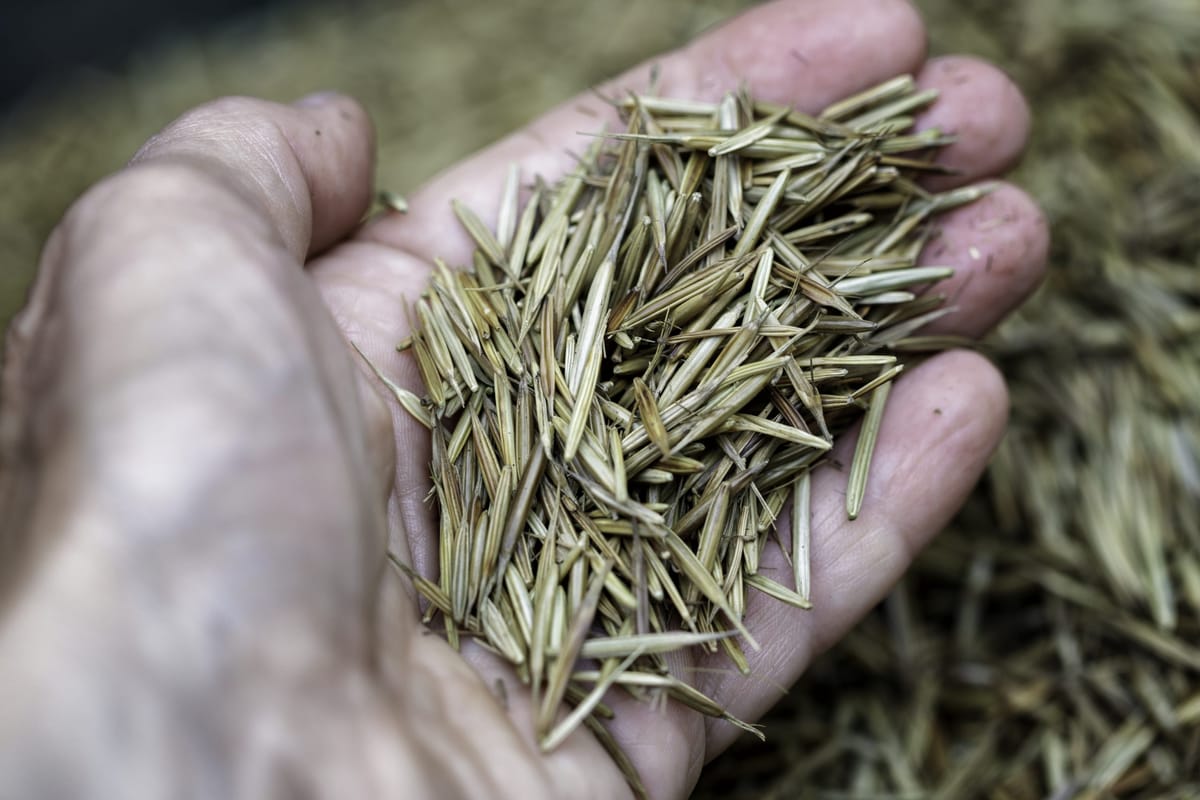
Finland, Minn., home to 215 souls and perhaps as many dogs, is a funky mix of loggers, organic farmers, and people who can point to their grandmother’s house. Tucked back from the tumultuous weathermaker Lake Superior, the seasons are intense, the people deeply tied to the forests and lakes, and the sense of place strong. Community celebrations revolve around the circle of seasons, from fishing to berry picking, from deer opener to trout opener.
Late summer brings wild rice, which ripens from south to north across the lake regions of Minnesota, Wisconsin, and southern Ontario. The four-week window for harvesting arrives here in late August, and local coffee talk turns to reports from rice camps and the changing fall weather.
The transition from green rice to finished rice is an ancient one that involves a wood-fired parcher, constant attention, intuition, and in Finland’s case, an antique chafing machine. The Finland Wild Rice House is part abandoned school, part timber frame addition, and surrounded by piles of firewood. It is also a community gathering spot; I am not the only one arriving with a strapped-down canoe, a grin, and muddy feet.
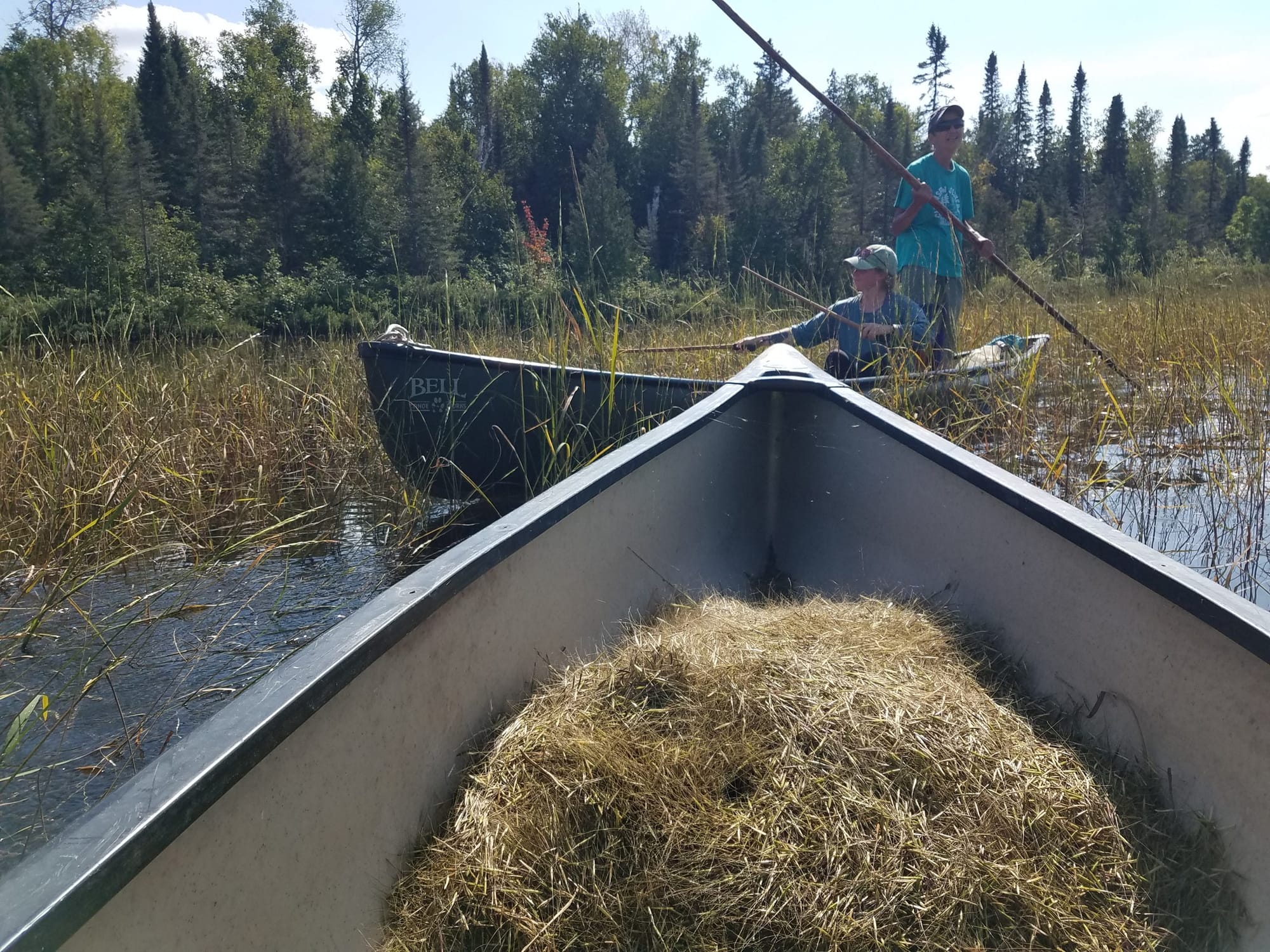
I have just experienced my first day on the water with my mentor, Marc Smith, who expertly pushed us through muddy flats with a 12-foot pole, breaking all the rules I know about canoes by standing in the back like a gondolier. I sat in the bottom of the old green Sears canoe, bending tall stalks of Zizania palustris, wild rice, over the edges, inviting the rice into the boat.
Laughter from other canoes traveled through the green expanse of rice. Trumpeter swans gorging themselves honked in the distance, sounding like a clown car unloading. After four hours, the rice covering my legs was shimmering with tiny spiders and white worms. Everything felt alive.
I’m dropping off what feels like 60 pounds of gold and will return in a few days to pick up about 30 pounds of finished, ready-to-savor wild rice. I feel rooted, satisfied, and itchy.
Driving home, I realize the Finland Wild Rice House experience has worked: I have a new relationship with this native grain, this plant, and my neighbors. My curiosity is piqued, and I want to learn everything about this amazing food, so sacred to my Indigenous Anishanaabe neighbors.
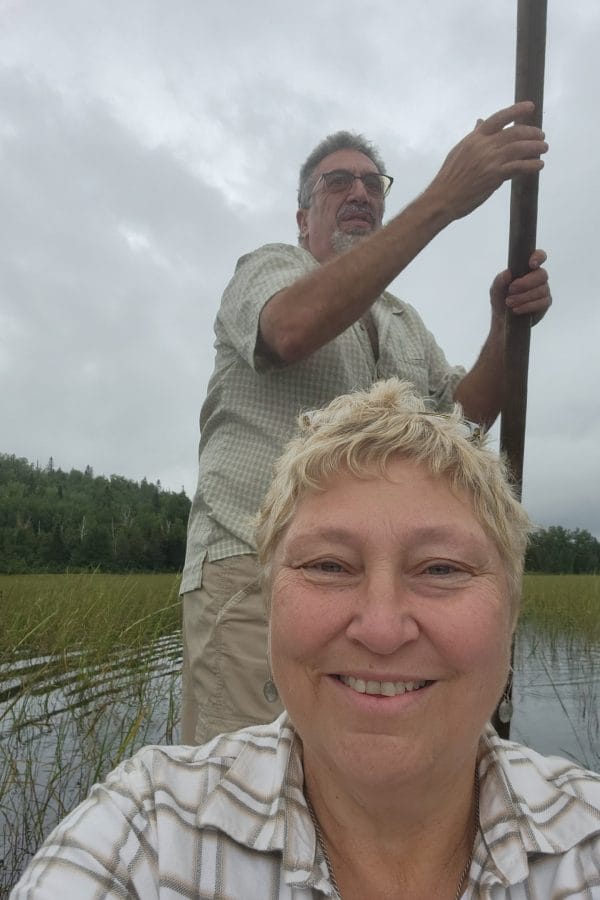
Grant funders know there's a rice processing plant filling the needs of a small community. The economic impact of the wild rice harvest is around $25 million a year, according to data in a 2018 report from Earth Economics.
“But that’s the half of it, that’s only what they know how to measure,” said Frank Bibeau, a member of the Minnesota Band of Chippewa, an attorney, and lifelong ricer, “because anyone with rice knows that a gift of wild rice is more than a gift.”
The Finland Wild Rice House, now at the end of its grant funding, is about to become self-sufficient. As a nonprofit, the goal is to break even. This year, it processed more than 15,000 pounds of green rice and sadly turned people away.
Here, wild rice is the fulcrum upon which new state and federal law is emerging, with Native tribes suing to stop a new copper-nickel mine that could create sulfide pollution – a scenario that would threaten rice waters. Wild rice is also a cultural touchstone. In the Land of 10,000 Lakes, wild rice is a delicacy, and the best of wild rice is made by friends and family. Wild rice is our heritage.
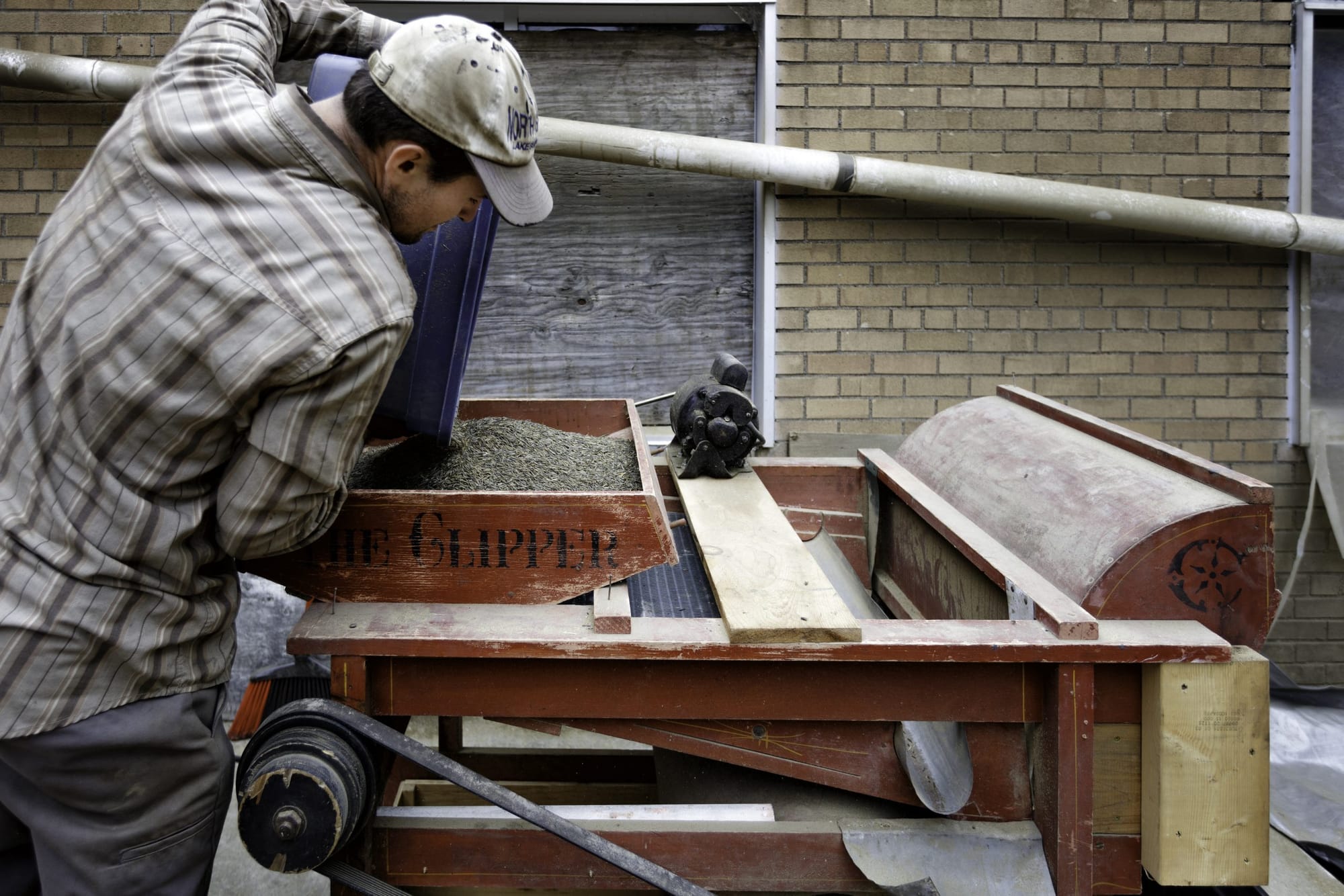
Where the magic happens
Blake Hawbaker, 34, is moving quickly around an 8-foot long firebox with a hose in one hand and an iron poker in the other to manage the temperature. This is his third year of cooking rice, and this parcher – loaded with around 100 pounds of green rice – this is where the magic happens.
“I was really fortunate to learn from someone who did everything by just using his senses,” Hawbaker said, cooling down one end of the firebox with a well-directed spray of the hose. “That kind of skill set comes from a lifetime of watching and learning.”
Hawbaker is humble and quick to credit Bibeau, Hawbaker’s instructor. For three days, Hawbaker lived at Bibeau’s rice camp, where he learned that rice has a sound when it’s ready, a smell, and a certain bend between finger and thumb. And that each batch will be different, just as the grain is different, depending on what body of water it grows in, and when in the season it is harvested.
“People who have been doing this for a long time know the skills and knowledge, the art of cooking rice. But we’re losing the small batch processors to retirement,” said Program Coordinator Meghan Mitchell. Struggling to capture the enormity of wild rice’s impact on herself or the community, she says this: “This is a wild food. An indigenous food. It’s good for the spirit and soul. We’re looking for people to invest themselves and steward the rice, but also learn how to make the rice.”
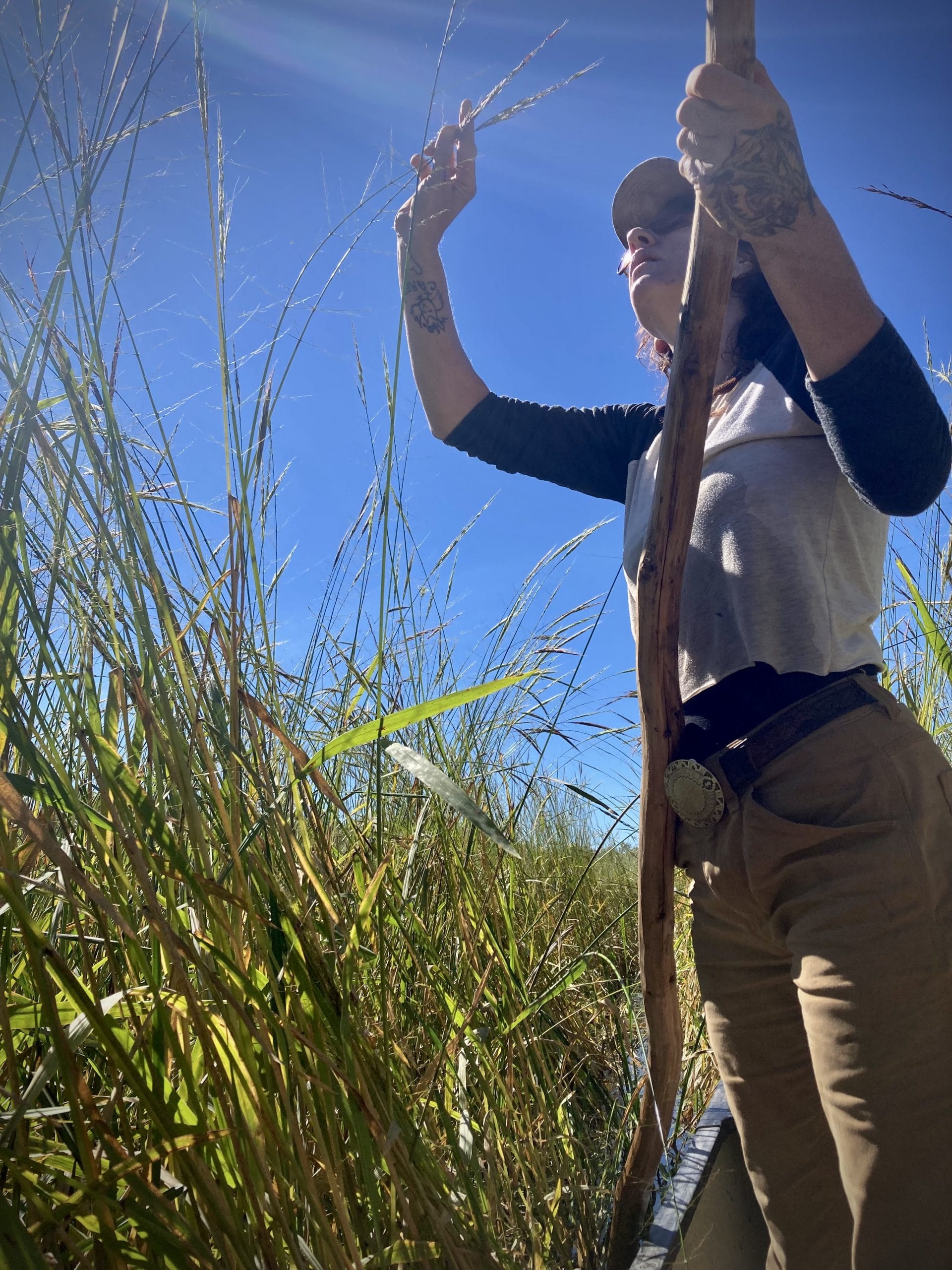
On New Years Eve 2018, the Minnesota White Earth Band of Ojibwe adopted a Tribal ordinance recognizing the rights of wild rice, or manoomin in Anishinaabemowin. Endemic to the Great Lakes region, wild rice has served as a staple food, medicine, and sacred gift. In fact, oral tradition tells of the prophecy that prompted migration to find “the food that grows out of the water.”
“It’s a long legal struggle that shouldn’t even have to happen,” said Bibeau, a self-described free-range tribal attorney. “The rice compels you to defend it. The rice asked me to represent it.”
Bibeau, who has been at the front of a legal battle to grant wild rice rights, points out that wild rice habitat has been degraded. What’s left is a battleground for habitat protection, corporate interests, and state water quality rules. Pollution from mining is the most pressing issue, as several proposed copper-nickel mines move through the courts and divide local communities.
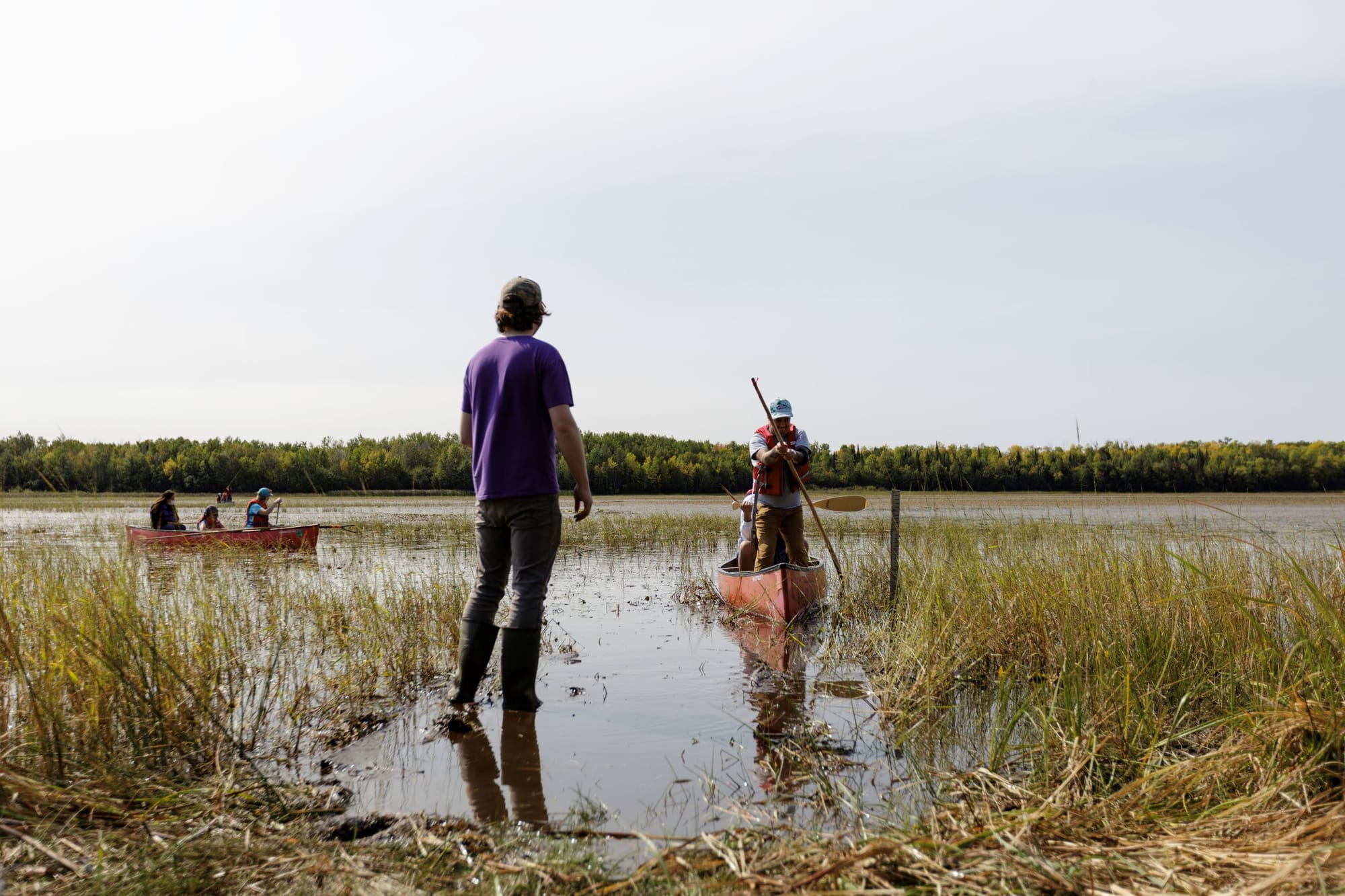
A rice recipe for building community
Perhaps the most limiting factor to this community model’s success is the fabrication of the processing machines themselves. Large processing facilities, many of which mainly operate to serve genetically modified paddy “wild rice,” have engineers and scientists. Small-batch processors – such as start-up tribal initiatives to just-friends-and-family parchers – do it all. The thrashers, for example, are often handmade from cannibalized machinery.
The Finland Wild Rice House has trained a few dozen new harvesters and processing apprentices who, like me, became accidental activists. Local, small-batch ricers have a place to finish their rice close to home, serving an immediate need. It’s likely to break even this year. It’s a community model that could be replicated elsewhere.
“Rice is so big. You need two people in a canoe, you need a few people for cooking,” Bibeau said. “Wild rice forces the concept of family and community on those who are glad to participate.”
